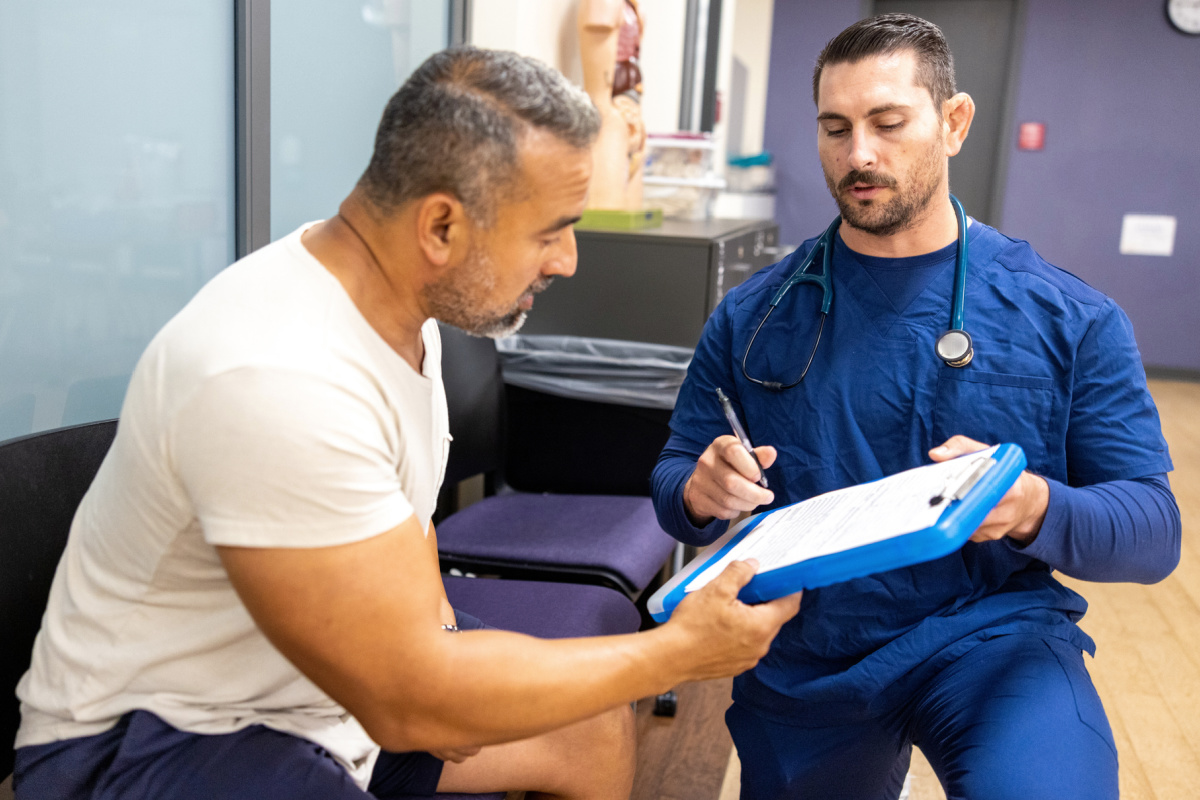Let’s go down memory lane.
As the new millennium dawned, Dade and Broward Counties were in the midst of a professional liability crisis. Insurance was not only unavailable. It was unaffordable.
Neurosurgeons were being asked to pay $250k/yr in coverage.
Many policies topped out at $250k in benefits. But, hell, they’d cover you for up to three claims a year plus defense costs.
Doctors were leaving.
Hospitals started allowing physicians to practice without any coverage, virtually unheard of anywhere else in the country.
And modest tort reforms were enacted.
A $500k cap on pain and suffering was imposed. If the patient suffered death or persistent vegetative state, a $1M cap on pain and suffering (more accurately called non-economic damages) applied.
Insurers returned to the state.
Premiums went down. The market stabilized.
In 2007, Susan Kalitan underwent outpatient carpal tunnel surgery. During intubation, her esophagus was injured. She complained of pain, but was sent home after potential cardiac problem was ruled out. The next morning, a neighbor found her unresponsive. She was rushed to the emergency department and taken to the operating room quickly to repair the tear. The patient’s next memory was waking up several weeks later. She had numerous surgeries, a long and extensive rehabilitation, and still has residual symptoms.
We can all agree this was a horrible outcome from a routine carpal tunnel surgery.
The patient sued.
Jury awarded $4.7 in total damages. That included $2M for past pain and suffering and an additional $2M for future pain and suffering.
The noneconomic damages award of $4 million was reduced by close to $2 million by the “[l]imitation on noneconomic damages for negligence of practitioners” under section 766.118(2) and “[l]imitation on noneconomic damages for negligence of nonpractitioner defendants” under section 766.118(3), Florida Statutes (2011). Furthermore, the noneconomic damages award was further reduced by about $1.3 million, as the Hospital’s share of liability was capped at $100,000 by virtue of the hospital’s status as a sovereign entity. § 768.28, Fla. Stat. (2007).
This was a perfect storm. A patient with such serious injuries was being asked to stomach $100k total in non-economic injuries. June 2017, the Florida Supreme Court weighed in.
They ruled the caps on non-economic damages to be unconstitutional.
They concluded that whatever rational bases for tort reforms that might have been relevant over a decade ago, they no longer apply. That crisis has long been over. And it makes little sense for severely injured patients to bear the primary burden when the benefit to the rest of society is so modest. My paraphrase of the Court – not my opinion.
I do not know where this will go. If history is any guide, I expect average payouts of cases to go up. I expect more cases to be filed. I expect premiums to go up. And the cycle may start fresh. We’ll see.
I admit I have a great deal of sympathy for individual patients such as Susan Kalitan. I just do not think it is reasonable to balance the books of her remedy on the backs of a few (namely, physicians) as opposed to amortizing it over the broader range of society.
What do you think?






I have a friend that’s an attorney.
He told me that attorney lingo for ‘non-economic damages’ is ‘the green-backed poultice’.
…
I thought about it a little, and said – ‘Yep, that’s basically what it is.’
This horrible thing happened to you? Let’s wrap it in money.
There – feel better now?
In the United States we play the blame game. The doctor did not wake in the morning saying that he was going to commit malpractice. Therefore there was no intent. In other issues particularly criminal ones intent is a component of the proof of the case.
While our society wants physicians to shoulder the burden of this type of case, which was an unanticipated, unplanned outcome, and pay compensation for the bad outcome, other societies do not do this.
Other societies accept that there is an inherent level of risk in everything that a physician does, and if there is a bad outcome the patient must shoulder the burden.
This avoids the legal blame game and the contingency practice of law where every case is a lottery ticket potentially for a large payout, to the lawyer.
If we wanted to as a society we could put together a catastrophic coverage plan that would cover individuals for any injury suffered. However such a plan would likely be abused as well in our society.
Society would become the deep pocket.
We need to get away from the concept that every time someone in society is injured, they need to get compensated by the party that injured them. Sometimes they just need to accept that life happens and there is bad luck that no one could prevent. The compensation system no matter how it is set up always will be abused.
The source of this problem can be laid at the feet of the AMA. They took med Mal out of contract law in the late 1800″s. This open the door to making not just the rich Doctor’s targets but all Doctor’s. Their solution did hold up until the Mid 1900’s because Doctor’s refused to take on junk suits as expert witnesses. Now the money is easy to make and there is a lot of it. We are our worst enemy in this.
As Medical Justice so aptly put it, sometimes the worse regulation is put into place to prevent the worst grievances. A worse case scenario should never serve as a model for model prohibitive legislation. This also happened just after the 2008 junk bond fund fiasco. Government itself encouraged loans to people who had no hope of paying them back.
Then deregulators were blamed for the “worse case scenario” when it was big government itself which wanted to promote home ownership at any cost for strictly political reasons.
This terrible medical loss case should be resolved in some way to solve the patient’s suffering, in the only way we know how to do it…by granting money to her.
But her case should not be elevated to provide a model for trial attorneys to use to create the opportunity for enormous profits for them. I’m not sure how to do this, but in the past physicians recommended special commissions with the ability to permit lawsuits “out” of the realm of standard losses, whatever that means.
Michael M. Rosenblatt, DPM
Esophageal tear after orotracheal intubation? There may have been a difficult / traumatic intubation with several attempts to intubate the correct orifice. There had to be bleeding, unless the ETT had a stylet and the breach was mid-esophageal. Should anesthesia inform that esophageal perforation is a complication of intubation?
Tort reform is critical. FL did take a step backwards since a surgical
Complication is unintentional, and shit happens. Esophageal perforations lead to mediastinitis and death is the norm after prolonged hospitalization. The patient should be grateful to be alive, and spend some time writing novels with her rehabilitated hand! Harsh, but without details, the law should have remained the same. Thank you.
Despite a couple of decades of hard work and advances on the subject of safety, unfortunately, patient injury is still a reality of our healthcare system. The example cited highlights this fact. However, most cases of patient injury are not a result of substandard care. Currently, the only way to extract payment for the consequences of patients’ injury is to sue all the entities involved in the injured patient’s care with the hope that someone will pay. The problem, of course, is that the current tort system is the most expensive and unreliable system to accomplish this desired goal of “righting a wrong.”
One would think that American society would insist on a more equitable and reliable system to adjudicate patient injury. Why hasn’t this happened? Well, the people who manage our legal system and judiciary insist on using a medieval English concept and system of Common Law (Torts) instead of considering an alternative system whereby cases would be evaluated and disposed of fairly. Such a system already is in place for worker’s compensation aka medical court format.
Funding for such as system would come from a combination of professional liability insurance carried by healthcare entities plus a 5% fee imposed at the point of service. The aggregate of fees pays for a “public” policy that would pay for untoward harm.
In my view, physicians and healthcare entities should no longer be the sole source of payment for patient injuries and patients should not have to sue to recover damages for injuries they sustained as a result of a healthcare encounters where no malpractice was committed.
.
Why doesn’t ex post facto apply here? No one can change the law to suit current needs. It can only be done a priori, never a posteriori.